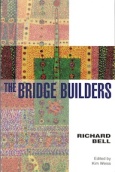I thought I would share with any readers of my blog the Prologue to my upcoming book, The Bridge Builders, book one of a trilogy of books…

Sunrise on Roanoke Island
PROLOGUE
The Bridge Builder
An Old man, going a long highway,
Came, at the evening, cold and gray,
To a chasm, vat, and deep, and wide,
Through which was flowing a sullen tide.
The old man crossed in the twilight dim;
The sullen stream had no fears for him;
But he turned, when safe on the other side,
And built a bridge to span the tide.
“Old man,” said a fellow pilgrim, near,
“You are wasting strength with building here;
Your journey will end with the ending day;
You never again must pass this way;
You have crossed the chasm, deep and wide
Why build you the bridge at the eventide?”
The builder lifted his old gray head:
“Good friend, in the path I have come,” he said,
“There followeth after me today
A youth, whose feet must pass this way.
This chasm, that has been naught to me,
To that fair-haired youth may a pitfall be.
He, too, must cross in the twilight dim;
Good friend, I am building the bridge for him.”
I come from a family of bridge builders who spent their lives trying to create a better world in which to live, work, and play — not only for themselves, but also for those around them. Men and women, black and white, lawyers, ministers, professors, artists, farmers, politicians, and school teachers – scores of folks from all walks of lives were touched by these stalwart bridge-builders, who saw education as a life-long pursuit and shared their knowledge with those around them. Their classrooms were not only books of all sorts on all variety of subjects, but their own homes and gardens – from the rolling, stonewalled estate of a English duke to the simple cottages and flat, sandy soils of coastal North Carolina. Indeed, much of what they learned had some basis in the land – in planting and growing things from the soil.
(more…)
 Architecture” happy hour event on September 22, 6-8 p.m., in the offices of Pearce Brinkley Cease + Lee in the Capital Bank building, Suite 1000, on Fayetteville Street in downtown Raleigh. The event is free and open to the public. For more details on the event, click HERE.
Architecture” happy hour event on September 22, 6-8 p.m., in the offices of Pearce Brinkley Cease + Lee in the Capital Bank building, Suite 1000, on Fayetteville Street in downtown Raleigh. The event is free and open to the public. For more details on the event, click HERE.





